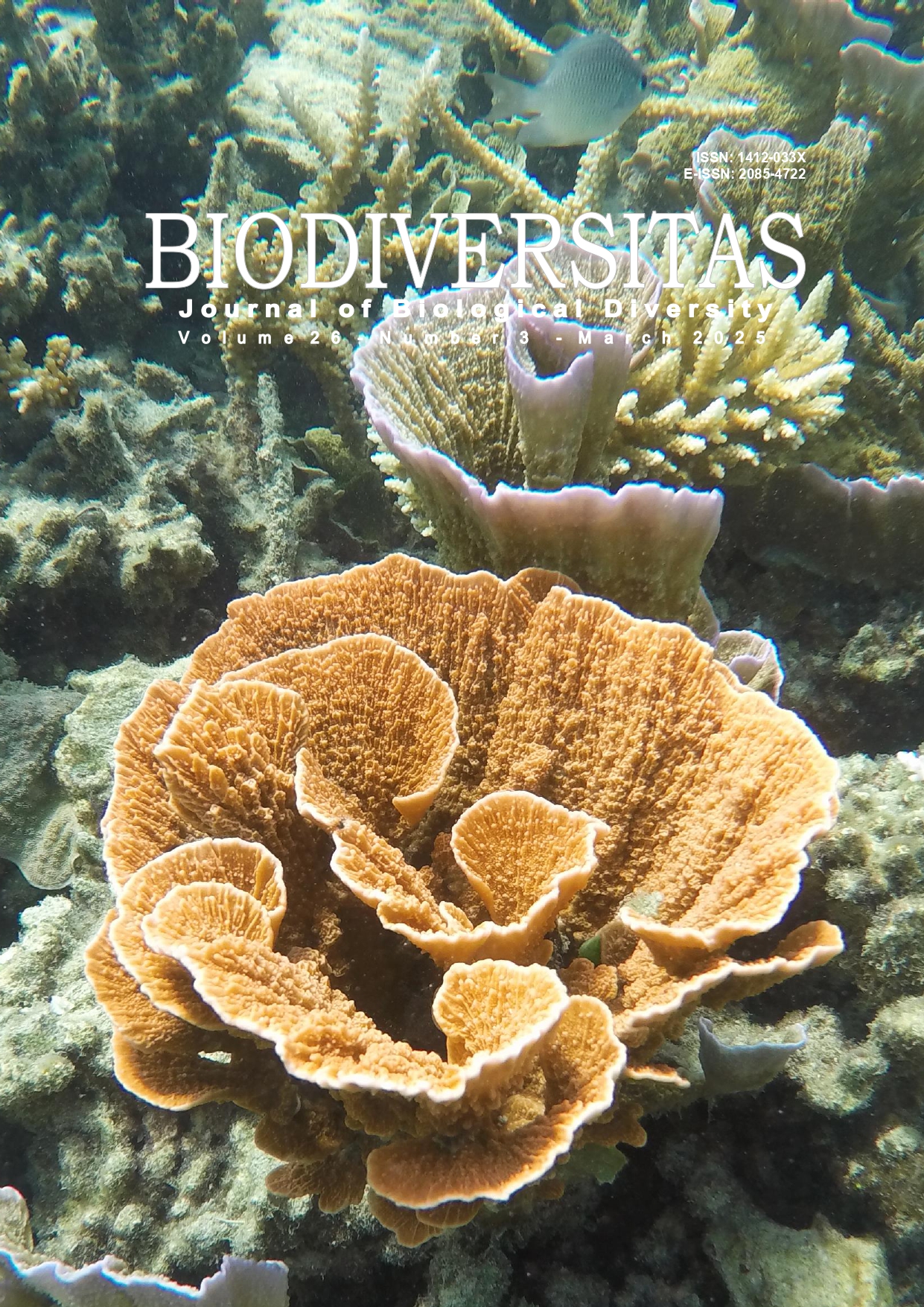Genetic diversity of local cowpea (Vigna unguiculata) germplasms of East Nusa Tenggara Province, Indonesia revealed by seed characteristics
##plugins.themes.bootstrap3.article.main##
Abstract
Abstract. Mau YS, Oematan SS, Arsa IGBA, Ndiwa ASS, Bere AC. 2025. Genetic diversity of local cowpea (Vigna unguiculata) germplasms of East Nusa Tenggara Province, Indonesia revealed by seed characteristics. Biodiversitas 26: 1279-1288. Cowpea (Vigna unguiculata) is one of the predominant pulse crops in the tropical and sub-tropical regions, including Indonesia. Cowpea is commonly cultivated in a mixed cropping system with maize by dryland farmers in West Timor, East Nusa Tenggara Province, Indonesia. Still, information about its genetic diversity level is unavailable. This study aimed to characterize the cowpea seeds from West Timor and to determine the genetic diversity based on seed characteristics. A total of 126 seed accessions were collected from farmers in the district of production centers in five districts in West Timor. The collected seeds were observed for qualitative and quantitative characteristics in the laboratory. The data were subjected to cluster analysis to determine the genetic diversity level and principal component analysis to determine the characters mostly responsible for diversity. The results showed a high genetic diversity among the accessions. Cluster analysis results revealed that the collected accessions were grouped into three clusters at a truncation point of 8.0, corresponding with seed characteristics. Four main principal components (PC) explained most (81.70%) of the observed variability in the data set. Both seed morphological and quantitative characters contributed almost equally to the diversity of the accessions.


 https://orcid.org/0000-0002-5992-1467
https://orcid.org/0000-0002-5992-1467